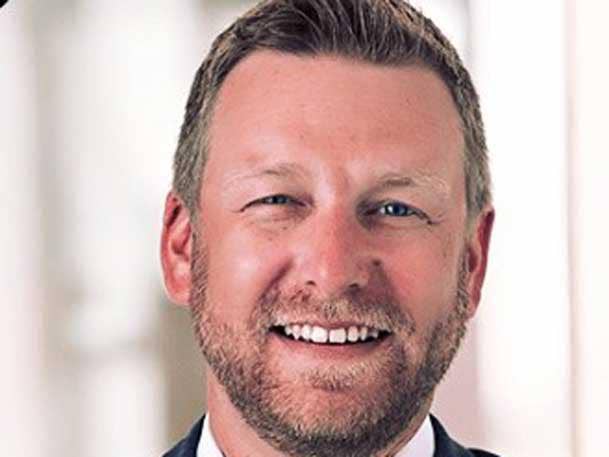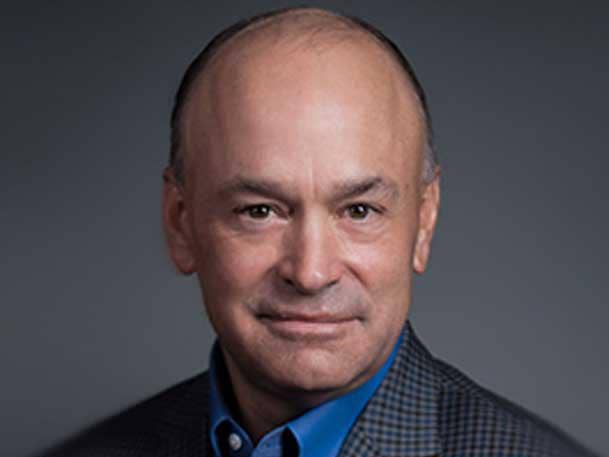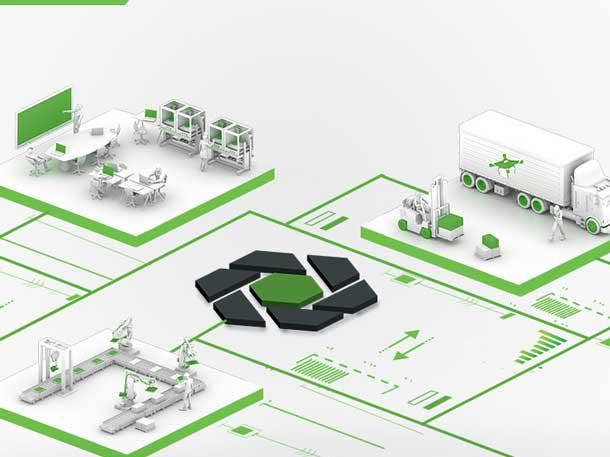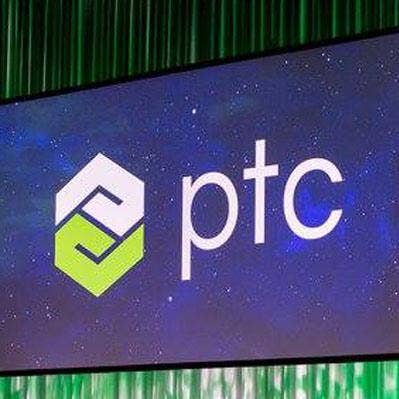PTC Channel Chief Stuart Heavyside On The ‘Massive’ SaaS Opportunity And Why Digital Marketing Is Key To Partner Success
‘The transition to SaaS is going to drive a huge amount of revenue, which the channel is going to take more of,’ says PTC Senior Vice President and Channel Chief Stuart Heavyside. ‘We should see the pie get bigger and with that the channel get bigger as well.’

Stuart Heavyside, PTC Inc.’s senior vice president and channel chief.
With two decades in software sales and leadership positions, Stuart Heavyside, PTC’s senior vice president and channel chief, is leading the nearly $2 billion IoT software provider’s charge into Software as a Service.
“The transition to SaaS is going to drive a huge amount of revenue, which the channel is going to take more of,” he said. “We should see the pie get bigger and with that the channel get bigger as well.”
PTC partners account for about one-third of the company’s annual sales, Heavyside added.
Based in Boston’s Innovation District, PTC’s portfolio includes computer-aided design (CAD), product life-cycle management (PLM), application life-cycle management (ALM), and service life-cycle management (SLM) offerings designed to enable manufacturers to create and service products.
Windchill, PTC’s PLM software, is expected to be the first of the legacy PTC offerings to move to SaaS, followed by Creo. PTC is also working on new channel program incentives to drive the SaaS transition, he said.
Heavyside joined PTC in 2011 and was promoted to senior vice president of worldwide CAD sales in 2019. He briefly left the company to join SaaS engineering software provider Jama Software as chief revenue officer. He returned to PTC to oversee Onshape, the Cambridge, Mass.-based cloud CAD company acquired by PTC, as senior vice president of sales. He took the channel chief job in February.
“I’ve had my head deep in SaaS for three years now,” he said. “I am bringing that experience to bear as we make the transition [to SaaS].”
In an interview with CRN, the self-described tech geek discusses PTC’s sales strategy, its evolution to SaaS, and the many ways channel partners can make money on the technology.
An edited transcript of the conversation follows.

PTC CEO Jim Heppelmann
What's the rollout of the SaaS model for the channel look like for the rest of the year?
In November, Jim [Heppelmann, president and CEO of PTC, pictured] announced our SaaS journey to Wall Street. We’ve been working with partners on how that model works in our partner space. At the same time, the product teams have been taking our Windchill [PLM software], Creo [3-D CAD software] and our other products and asking, ‘How do we move them into a SaaS space?
The challenge is varied depending on which application you’re talking about. IoT is a relatively modern application. Creo and Windchill have been around a really long time.
Some of our augmented reality is already built on SaaS technology. That’s already out there. We are already selling that. Now we are taking the core and saying, ‘How do we move towards that with CAD in our PLM base?
What will be the impact of SaaS in the channel?
SaaS will drive more focus on customer success. It’s going to remove the complexity of the old model, eliminating how the hardware comes together, and how to implement it. The SaaS model is going to drive end-user outcomes that are more positive than ever before. Our partners will be able to help our customers do that. We’ll drive more revenue that comes with it, so everybody’s happy. The selling motions change with SaaS. SaaS ultimately is an underlying technology of delivery.
My experience when I was away from PTC [included selling SaaS software]. But I was also running Onshape and focused on that digital selling model. That ability to understand how the customer is really using and getting value from your product is integral to SaaS. How do you know that in an on-premises environment? You don’t.
Having the insight to know what customers are really getting value from so you can focus on that whether it is sales, marketing or customer success is key. That is a motion that is new with SaaS. It does take a while to get your head around it. But I am very confident that our partners are going to do well with this. We are talking regularly with our partners about how does this evolve and how do they participate.

What sales goal do you have around SaaS?
We haven’t set targets around it yet. But we anticipate it will be a big part of the energy and effort that goes into the 2023 fiscal year, which begins Oct. 1.
Are there certain products that go through the channel more heavily than others?
Our CAD business [through the channel] varies between 40 percent and 55 percent. It depends which quarter you look at it, but the CAD business is very heavily sold through our channel. Obviously, IoT and AR are big growth businesses, but they’re a smaller number. And that’s true for the channel and direct.
How can partners participate and make money selling SaaS?
We need to help our partners evolve into the business model that allows them to provide the services that make more of an impact in the SaaS world.
In a full SaaS multitenant environment, how much customization do you really want versus configuration? We’re moving from customizing things heavily to configuring them in a much more multitenant SaaS-like way.
Our partners are already doing a lot of this work because for years they’ve been trying to simplify how Windchill operates in the customer base. It’s more of an evolution of where we have been so they can drive those services and drive more revenue for themselves and PTC.

Will Windchill+ be the first SaaS version to be released? Yes, it will be a fully cloud-based system sitting on Microsoft Azure. Windchill+ will be released first, then Creo+. Vuforia, our AR application, is partly SaaS.
We also spent $1 billion in the last two and a half years acquiring Onshape and Arena [Solutions, a SaaS PLM provider]. Onshape is the first completely cloud-based CAD system in the world. It is the fastest-growing CAD system in the world and it is completely SaaS. Arena is a completely cloud-based PLM system, which is growing like crazy.
What has the transition to SaaS been like for partners?
The evolution of partners [to SaaS] has been great. The partners selling Onshape that also sell Creo and Windchill are evolving to this new world of SaaS with customer success and digital fulfillment. They are doing great. We haven’t found an issue with getting partners to the next evolution of our go-to-market motion.
The transition is working for sure. The modern motion starts with digital marketing and drives all the way through to fulfillment by the partner in a more traditional way. Our partners are evolving to that. The more money they are spending on digital marketing, the more successful they have been.
I can show you that the partners spending more money on the digital marketing engine right up front are the partners that are most successful.
Partners have their [digital marketing] tools. We will suggest what tools they use. We provide some of the content. They provide some of the content. It is very much a partnership.

How big is the SaaS opportunity in for partners to make money?
The PLM market is about $8 billion. In general, we believe the SaaS market is roughly 2X, the on-premises market, so that’s $16 billion. Will channel partners sell all of that $16 billion? No. Of course not. There is always going to be competition out there. But the opportunity is massive.
For every single license dollar you sell as a partner you are going to achieve 1.8 to two times on that same dollar in the future. And that is conservative.
Certainly, the TAM [total addressable market] gets wider because you are going to have more people that can participate in production engineering. The main reason the market gets bigger is because we are achieving efficiencies in systems.
Why didn’t this happen sooner?
We are actually the first [in our market] to go [to SaaS]. Engineering is a laggard industry. It is just the nature of the industry because it is more complex.
We’re not selling software that’s a form on a webpage. This is engineering software. The complexity, the math and the physics behind our software is so complex you can’t just flip a switch, so the market just takes longer to get there. PTC has been leading the way with SaaS. We were the first to announce that we were going to SaaS of all the big vendors.
Why is the SaaS effort so important for partners?
The market is going to go SaaS. If we don’t make a bold move, then our partners are going to lose out to competitors that will do it.
The whole world is going to SaaS. Name all of the pieces of software you use just inside this building. How much of it is on-premises anymore? Very, very little. If you are using CRM, HR and fFinance systems it is all SaaS. There is no reason why you wouldn’t want to do that. We are really following the market, but we are the first to get there in our market.

What's going to be the economic impact on partners?
They will make more money. The amount of dollars they’ll make against the same sales effort will be more by nature of SaaS the economics. There’s just naturally an evolution of that, where they’ll make some more money. They’ll make money on the services that come with it as well. They will be doing things around the configuring of the systems and the transition from on-premises to SaaS.
What role do partners play for PTC?
They’re providing many of the consultancy services, they’re selling, and they’re doing marketing. There’s an element of fulfillment. But they’re also doing that entire customer relationship.
There’s an element of customer success implementation and configuration that happens across all of the different businesses.
Our partners are consultants. They are out there trying to make customers successful with PTC software and they have their own offerings that they add on top of PTC software which, as we get into the SaaS world, they will probably sell more of because they are driving more productivity with the customers.
When the announcement was made in November that you were pushing in this direction, was there a time frame given for how long it would take?
PTC wants to move fast. That’s the quick answer. I don’t know if we have an overarching date. There are a lot of things to do.

Have you established a new program to drive partners to the SaaS model faster?
That is exactly what we have been working on. We haven’t released any of the details yet because we are still working on it. I walked into the leadership of the channel six months ago and we essentially have spent the last six months focused on how to introduce this, how will the evolution happen, and what are the things we need to do to enable that. We are working on those details now and excited to release some of it soon.
Our partner program will be based around evolving to SaaS—not forgetting that we will still have non-SaaS applications out there in our world for a long time. This is a marathon, not a sprint. We have to protect the business while building for the future.
What is the goal for bringing the new SaaS channel program to market?
As fast as humanly possible. We are moving fast. Our goal is for our partners to be successful making the transition to SaaS. It is really that simple. So we are spending all of our time and energy doing that.
What's your sense of the appetite from the PTC channel? Are they excited for it? Are they scared? Are they somewhere in between?
I think they’re excited for it based on the partners that I’ve spoken to. They see that same transition we made from perpetual to subscription that went extremely well. Everybody did well with that transition. This is the next wave of transition. It should drive even more revenue and make for even more happier customers.
What is the opportunity to cross-sell and upsell with the PTC portfolio?
There is a massive opportunity to cross-sell and upsell. One of our stated goals as it relates to our SaaS transition is to move all of our products onto a single underlying platform. When we acquired Onshape, one of the real values of it beyond being the fastest growing CAD system in the world is that its underlying technology was built for SaaS. We named it Atlas.
We are in the process of taking all our products to try to get everything on to Atlas so it is one single database. That’s a big part of the R&D budget we are putting in place from the acquisition of Onshape.